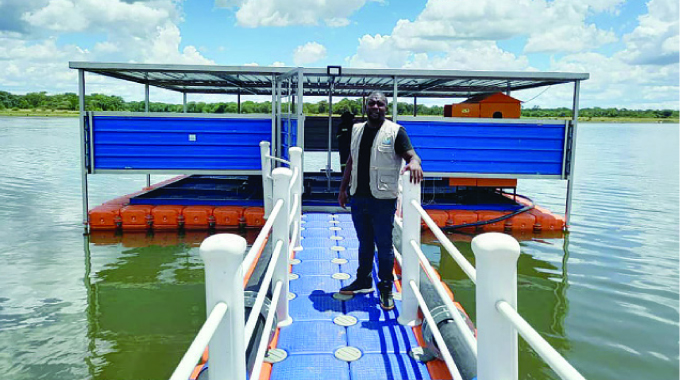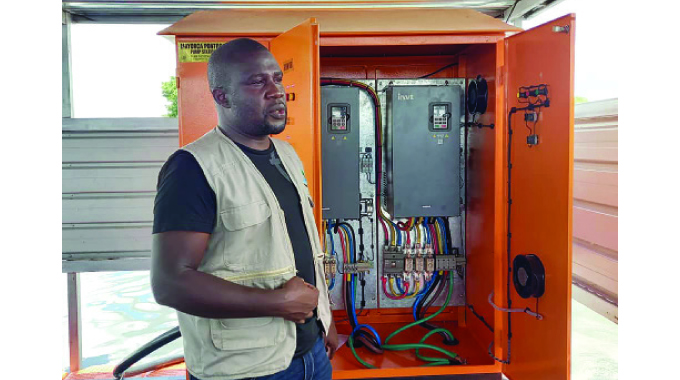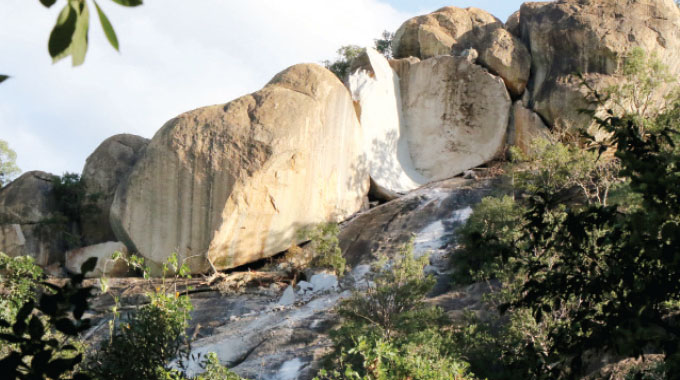Midlands engineers solve silt in pumps challenge

Patrick Chitumba, Midlands Bureau Chief
Engineers at the revived Mayorca irrigation scheme in Zhombe, Midlands province have designed a new floating pump or pontoon to address the challenge of pumps sucking silt when water levels from the supply dam are low.
Mayorca irrigation scheme in Ward Five, Sessombe Village in Zhombe, Midlands province was established in 1992.
It has 76 beneficiaries that have a hectare each and they grow sugar beans, wheat, maize and small grains.
Sessombe area like most parts of the Midlands province receives marginal rains and as such rain-fed agriculture is not viable.
The establishment of the irrigation scheme therefore brought relief to the 76 families that are now able to grow crops throughout the year. In 2006 Government rehabilitated the scheme under Operation Maguta, an operation meant to boost crop production in the country.
Flash floods in the 2016/ 2017 summer cropping season unfortunately breached the dam wall and the transformer was also vandalised forcing farmers to suspend crop production at the scheme.

Engineer Dungeni shows the modern and simplified Mayorca Irrigation Scheme pump station
The farmers had to revert to rain-fed crop production which is not reliable.
In 2021, the irrigation scheme was rehabilitated under the Smallholder Irrigation Revitalisation Programme (Sirp) by the Government in partnership with the International Fund for Agriculture Development (IFAD) at a cost of US$900 000 thereby enabling farmers to resume crop production.
The work undertaken under Sirp included the installation and electrification of two pumping units on a floating pontoon, installation of 480m of PVC line, installation of 315kva Transformer and boundary fencing.
The irrigation scheme is now a source of livelihood for the 76 families who have turned it into a green belt.
Plans are underway to transform the irrigation scheme into a commercial agriculture venture which means the beneficiaries will be assisted to produce surplus to supply different markets in order to generate revenue.
The members are expecting a bumper harvest from 38 hectares that were put under maize crop this season while the other 38 hectares have been cleared for sugar beans planting.
During the tour of the irrigation scheme last week, Engineer Reginald Dungeni said they have since replaced the old pumps with floating ones.
He said the old pumps frequently broke down during the dry season when the water levels were low due to sucking silt.
Eng Dungeni said the problem of pumps sucking silt is now a thing of the past following the installation of floating pumps.
“The floating pumps are in a boat-like structure and can be moved to different sections of the dam especially when the levels of water are low to avoid situations whereby pumps suck silt. We move the pumps to deep sections of the dam thereby enabling us to continue pumping water even when the water levels are low,” he said
Eng Dungeni said before the installation of floating pumps, water was pumped from the pump house to a boaster station that was in the field before it was pumped to the sprinklers.
So with this design now, water is only pumped once as it is pumped directly into the fields thereby eliminating the boaster pumps. We haven’t received our Zesa bill yet but we expect the farmers to pay half what they used to pay when the water was being pumped twice,” he said.
Eng Dungeni said they have 90kw and 75kw pumps operating from the pontoon.
“The bigger pump is pumping 288 cubic metres per hour and the smaller pump is pumping 210. The irrigation scheme is made up of four blocks and each pump is servicing two blocks. All the 76 hectares have access to water. The pumps are running concurrently and so the whole field is being covered,” he said.
Mr Nyasha Masare (45) the chairman of the irrigation scheme commended Government and IFAD for prioritising the revival of the irrigation scheme which he said was their lifeline.
“When the irrigation scheme was down, we struggled to produce food for our families. The entire community was affected because we are also employers as we hire locals to plough or assist during harvest time,” he said.
Lands, Agriculture, Fisheries, Water and Rural Development permanent secretary Dr John Basera said the Government is targeting to put 307 000 hectares under irrigation as it intensifies efforts to climate proof Zimbabwe’s agriculture against the effects of climate change.
Agriculture is critical to Zimbabwe’s economy providing 30 percent of export earnings and contributing 19 percent to GDP.








Comments